The mayor’s ambitious zoning plan was designed to create “a little more housing” in every neighborhood. But the version passed by the Council includes several carve outs to protect single-family areas and parking requirements.
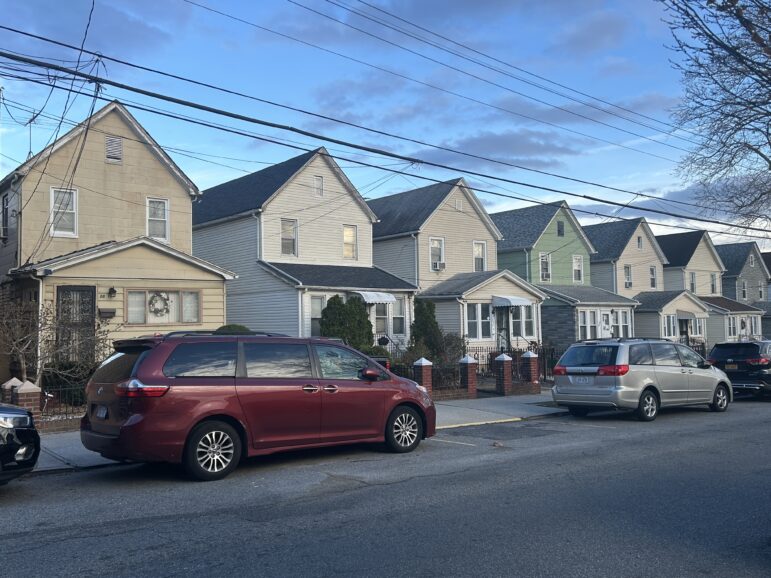
Patrick Spauster
Houses along 201st Street in Hollis, Queens. The final City of Yes deal included changes to protect areas made up of single-family homes like these.A good compromise leaves no one totally satisfied.
The modified version of Mayor Eric Adams’ “City of Yes” for housing proposal, passed by a divided City Council earlier this month, is expected to create 25 percent less housing than the mayor’s original plan. And while every neighborhood will see increases in the amount of housing permitted, some may now contribute a little less thanks to carve outs aimed at protecting areas with single-family homes and dependency on cars.
The modifications target specific districts—including Speaker Adrienne Adams’ and two neighboring districts in Southeast Queens, as well as stretches of the Bronx represented by Zoning and Franchises Committee Chair Kevin Riley. Those districts feature more single-family homes and a greater reliance on cars than the city overall.
During a contentious legislative process, which included countless community meetings and a 15-hour negotiating session before City Council committee votes in late November, support from those swing districts proved crucial. Mapping the modifications shows how some councilmembers were able to tailor the citywide plan to their wishes.
Legislators say the compromise will preserve the character of their neighborhoods and respect their constituents’ concerns while creating much needed housing, even if a little less than the mayor’s initial plan projected. Councilmembers also secured $2 billion for affordable housing development and $3 billion for programs to support infrastructure, homeownership and more.
“These revisions matter. They show that the City of Yes doesn’t mean yes at any cost,” said Councilmember Nantasha Williams, who represents Jamaica, Hollis, St. Albans and stretches of Southeast Queens.
The mayor’s proposal, which sought to increase housing production by permitting denser housing “in every neighborhood,” would have created 108,000 units over 15 years, according to Department of City Planning (DCP) estimates. The modified plan, passed with 20 “no” votes, reduced that to 82,000.
“Every new home makes a difference in bringing down housing costs,” said DCP Spokesperson Casey Berkovitz in response to written questions from City Limits. “That’s more homes enabled in a single land use action than in all of the Bloomberg administration’s rezonings, and more than double the de Blasio administration’s.”
Without tweaks, the plan might not have made it across the finish line at all, supporters say.
“These proposals didn’t have enough votes to pass without modification and so I think we recognize that and are happy that the modifications were modest and left it pretty strong,” said Brendan Cheney, director of policy and operations at New York Housing Conference, a nonprofit that organized a coalition in support of City of Yes.
More required parking
Where the mayor’s plan wanted developers to decide how much parking to build in each development, the Council elected to maintain zoning that requires off-street parking spaces in large swaths of the city.
Generally the compromise is tiered as such: In the core of Manhattan, the mandates are gone; near transit, parking minimums are reduced; and in areas beyond a half mile from transit, mandates remain intact.
But savvy councilmembers secured exemptions to broadly maintain existing parking mandates in “Special-25-241” districts. They include parts of Riley’s district in the north Bronx, Selvena Brooks-Powers’ district along the Rockaway peninsula, and Francisco Moya’s district in Corona. All three voted for the bill.

Where Councilmembers
Secured Parking Exemptions
Northern parts of the
Bronx kept parking
mandates in transit
areas thanks to
“Special 25-241”
zones.
In councilmember Moya’s, Riley’s,
and Brooks-Powers’ districts, portions
kept parking requirements unchanged
even near transit.
Parking Requirements Eliminated
Parking Requirements Reduced
Parking Requirements Maintained
Special 25-241 Parking Provisions

Where Councilmembers
Secured Parking Exemptions
Parking Requirements Eliminated
Parking Requirements Reduced
Parking Requirements Maintained
Northern parts of the
Bronx kept parking
mandates in transit
areas thanks to
“Special 25-241”
zones.
Special 25-241 Parking Provisions
In councilmember Moya’s, Riley’s,
and Brooks-Powers’ districts, portions
kept parking requirements unchanged
even near transit.

Councilmembers Moya, Riley,
and Brooks-Powers, maintained parking
requirements in portions of their districts
even near transit.
Parking Requirements Eliminated
Parking Requirements Reduced
Parking Requirements Maintained
Special 25-241 Parking Provisions
Portions of the city kept
parking requirements the
same even in transit
areas thanks to
“Special 25-241”
zones.
Critics of parking mandates say they are less needed near transit and add to the cost of building housing, worsening the city’s undersupply. The special zones also create additional complexity when one of the goals of City of Yes was to “simplify” zoning.
But some councilmembers feel differently.
“The parking mandates don’t feel sufficient in communities like mine because we’re so dependent on [driving] … it would spell disaster for my community,” said Brooks-Powers, who represents portions of Southeast Queens and the Rockaways.
Cities across the country have eliminated parking mandates entirely. But New York City, with the nation’s best transit network and where most residents don’t own cars, has pockets where car dependency persists.
“Car ownership is a necessity for many families in my district,” Councilmember Nantasha Williams told City Limits, pointing to fewer transportation options in Southeast Queens along the Nassau County border. “Maintaining parking mandates ensures that development does not disrupt the daily lives of residents.”
Even with the carve outs, a DCP spokesperson emphasized it was a net improvement overall. And certain projects will not require parking in the special parking zones, including town center developments under 75 units, accessory dwelling units (ADUs), and houses of worship. Affordable housing also has reduced requirements in these zones.
The areas where City of Yes eliminated parking requirements amounts to the largest in the country by population, even if it doesn’t cover the whole city.
“These changes will make it easier to build housing across the city,” said Berkovitz.
Less housing near outer-lying transit stops
City of Yes allows a little more housing than would otherwise be allowed in areas near public transit. This applies to so-called transit oriented development (TOD) zones, located within half a mile—about a 20 minute walk—of subway, Metro-North, and Long Island Railroad stations.
That is, except in portions of Queens and the Bronx. At the 13 easternmost LIRR stations and four northern New York City Metro-North stations, legislators cut that radius in half. Two stations in Wakefield and Woodlawn border the district of Zoning and Franchises Committee Chair Riley, four are in Councilmember Brooks-Powers’ district, and six are in Williams’ district.
The remaining stations lie entirely in Councilmember Eric Dinowitz’s Bronx district and Vickie Paladino’s Northeast Queens district. Both lawmakers were long shots to supporting City of Yes, and both ultimately voted against it.

Councilmembers Reduced the Transit Zone In Southeast Queens
In the transit oriented development zone,
the council permitted more density near
subways
Jamaica Avenue
Hollis
Jamaica Center
Inside a 10 minute walk
from LIRR stations, greater
density will be permitted
St. Albans
Nassau County
Van Wyck Expressway
Montefiore Cemetery
But legislators made it so
areas between a 10 and 20
minute walk won’t see
additional increases in housing
Laurelton
Rockaway Boulevard
South Jamaica
Belt Parkway

Councilmembers Reduced the Transit Zone
Near Outlying Commuter Rail
Jamaica Avenue
Hollis
In the transit oriented development zone,
the Council permitted more density near
subways
Jamaica Center
Inside a 10 minute walk
from LIRR stations, greater
density will be permitted
St. Albans
But legislators made it so
areas between a 10 and 20
minute walk won’t see
additional increases in housing
South Jamaica
Belt Parkway

Councilmembers Reduced the Transit
Zone Near Outlying Commuter Rail
Hollis
Jamaica Center
In the transit zone near subways
and within a 10 minute walk of
LIRR stops, additional density
is permitted
St. Albans
But legislators made it so
areas between a 10 and 20
minute walk won’t see
additional increases in housing
South Jamaica
Councilmember Williams said she pushed for the changes. “This approach prevents overburdening infrastructure and respects the car-dependent nature of families in District 27,” the lawmaker said in written responses to questions from City Limits.
Experts like those at the Permanent Citizens Advisory Committee to the MTA point to areas around train stations as crucial places to build new housing, because of the access to jobs and a positive feedback loop of encouraging transit use. The group estimated that new housing around transit from City of Yes could generate $309 million in annual operating revenue for the MTA via increased ridership.
But other cities like Columbus, Ohio, whose transit networks pale in comparison to New York’s, have gone further when it comes to permitting density around transit.
Ari Browne, 20, lives with her parents in Hollis, Queens, and catches the F train or the Long Island Railroad to get to work in Manhattan. She’d love to move out someday, but says housing is too expensive right now.
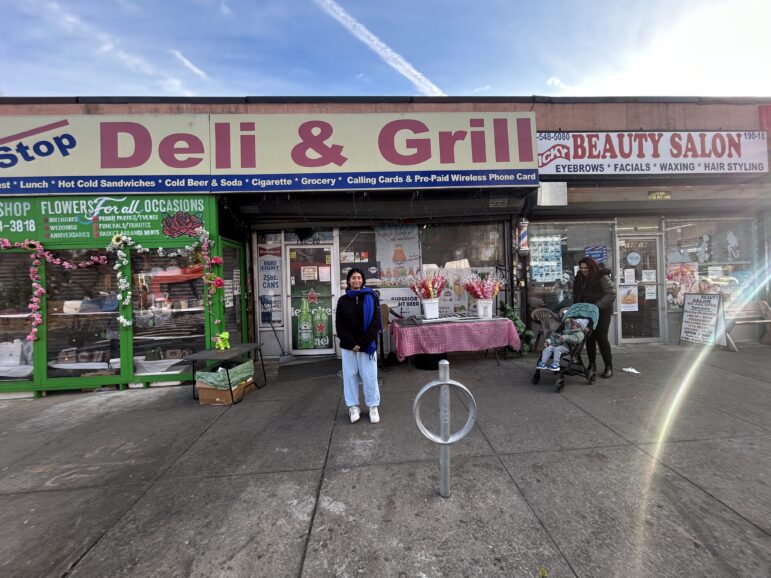
Patrick Spauster
Ari Browne on Hillside Avenue in Queens, just at the edge of the transit zone.The number one thing she’d look for in a new place: “being close to work.” She says she supports some new housing, especially in underutilized spaces like offices, but doesn’t want to see people displaced.
Her neighborhood in Hollis is just out of reach of City of Yes changes that would permit more housing in areas close to transit.
Protecting single-family enclaves
“A little more housing in every neighborhood,” one of the City of Yes’ catchphrases, roiled some corners of the city with suburban-style single family housing.
In such neighborhoods, the plan would have allowed slightly denser housing like duplexes and triplexes, and some small apartment buildings, in areas that intersected transit zones.
“From the beginning, this was a very necessary and modest proposal,” said NYHC’s Cheney. “A lot of alarm from some neighborhoods that felt like it was not proportional to the changes we’re talking about.”
Under the mayor’s plan, builders could have constructed three-story apartment buildings in detached single-family zones near transit. The Council’s plan maintains current density.
Bronx Councilmember Dinowitz told City Limits that the Council’s changes improved City of Yes, but still weren’t enough to earn his vote. He also bristled at the idea that some neighborhoods aren’t doing their fair share to build more housing.
“I believe it is okay to have diverse types of housing in New York City. There are some people who don’t believe in single-family zoning and I disagree with them,” he said.
Councilmember Paladino, explaining her “no” vote, said 12 of 14 Queens community boards disapproved of the plan.
“I fear that this body is now going to spend years trying to make sense of what we are about to do with carve outs and fixes and clarifications, all because we didn’t take the time the time to do this right or to listen carefully to what the people are telling us,” said Paladino. (A spokesperson for DCP emphasized the extensive community outreach for the proposal, which included at least 175 board meetings.)
Communities in Southeast Queens echoed concerns that development would change the character of their single-family neighborhoods, said Councilmember Williams, who voted yes on the revised plan.
“By listening to the voices of residents, we successfully exempted single-family neighborhoods like Queens Village, St. Albans, Cambria Heights, and Addisleigh Park from high-density development,” she said.
But changes targeting low-density districts in Southeast Queens affect lower density districts everywhere—even those with better transit access. In Ditmas Park, Flatbush, and Midwood in Brooklyn, single family neighborhoods short walks from transit won’t see the congruent increase in density as other transit-oriented communities.

Transit Rich Areas Of The City Won’t See As Much New
Housing if they are in Single Family Zones
Coney Island Avenue
Detached single-familiy zones
like these in Flatbush no longer
get additional density from
being near mass transit
Brooklyn College
Flatbush Avenue
Avenue H
Ocean Parkway
Kings Highway
Avenue M

Transit Rich Areas Of The City Won’t See As Much New
Housing if they are in Single Family Zones
Coney Island Avenue
Detached single-familiy zones
like these in Flatbush no longer
get additional density from
being near mass transit
Brooklyn College
Flatbush Avenue
Avenue H
Ocean Parkway
Kings Highway
Avenue M

Transit Rich Areas Of The City Won’t See As
Much New Housing in Single Family Zones
Detached single-familiy zones
like these in Flatbush no longer
get additional density from
being near mass transit
Brooklyn College
Flatbush Avenue
Avenue H
Ocean Parkway
Advocates credit the carve outs targeting single family neighborhoods to a land use process that gives more power to homeowners than renters, who make up a majority of New Yorkers.
“The land use process is fundamentally biased against pro-housing reform at every step,” said Annemarie Gray, executive director of Open New York. Community boards and people that show up for public comment on legislation “are richer, they skew whiter, they are older, they’re more likely to be homeowners, they’re less likely to have kids than the communities that they represent,” she said.
In general, community boards in outlying regions of the city, where there are more single family homes and fewer apartment buildings, tended to vote against City of Yes.
“Community districts that voted negatively have an average of 33 [percent] of their lots zoned for one and two family houses, while community districts that voted positively have just 10 [percent] of their lots zoned for one and two family homes,” found Lucy Friedman-Bell and Marshall Strawbridge, two graduate researchers at New York University.
Though New York has less single-family zoning than any city in the country, other cities have eliminated it entirely to spur the construction of duplexes, triplexes and other small multi-family homes.
While experts say increasing the housing supply will lead to affordability, many residents remain skeptical. Tamara B, who asked to not include her last name to protect her privacy, lives in a rent-stabilized apartment in Ditmas Park, across from single family homes near Avenue H. She said she likes how quiet the neighborhood is, and likes to walk her dog past the postage-stamp lots.
She can’t imagine moving because she can’t afford to buy a home, and new affordable apartments for rent through the city housing lotteries are still too expensive. “Make it legit affordable. Just because someone makes a certain income, doesn’t mean that $2,000, which is pretty much one of the checks for the month, should go towards rent,” she said.
Advocates insist that modest changes to increase density would maintain neighborhood character and help mitigate rising rents.
“We should be able to incorporate more small multi-family into more neighborhoods to allow for more housing. It’s not scary and they can really fit into the neighborhood,” said Cheney.
Fewer ‘town centers’ and accessory dwelling units
The Council also eliminated denser residential in some so-called “town centers” where commercial uses are permitted. New York once built many mixed-use buildings with ground floor commercial and residential above, the Department of City Planning points out. But zoning restrictions prohibit it in many commercial stretches today.
Under the final version of the plan, isolated commercial blocks, as well as mostly residential blocks, are not eligible for town center development. For example, a lot like this one near the 233rd Street 2 and 5 train station in the Bronx would no longer be a town center:
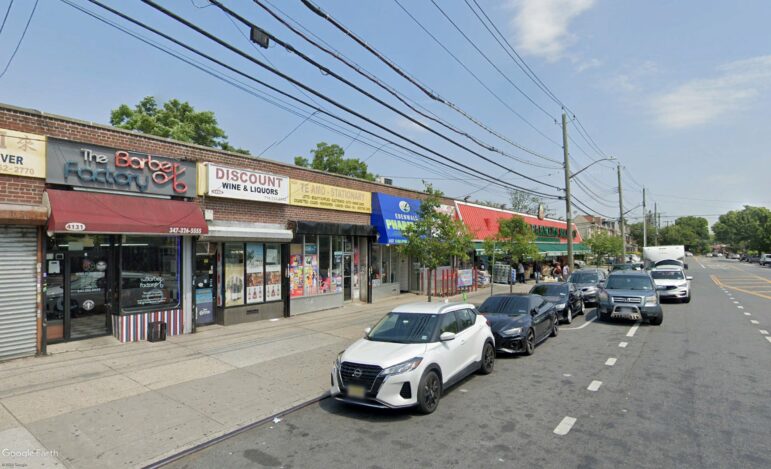
Google Earth
Under the final plan, a lot like this one near the 233rd Street 2 and 5 train station in the Bronx would no longer be eligible for additional “town center” density.Nor this block on the North Shore of Staten Island, with single family homes across from a shopping center, since most of the block’s frontage is residential, not commercial:

Google Earth
This block on the North Shore of Staten Island, with single family homes across from a shopping center, would be ineligible for town center zoning since most of the block’s frontage is residential, not commercial.Staten Island’s three councilmembers railed against City of Yes, which they say doesn’t address the needs of the more suburban-style living there. “Homeowners should not be discriminated against because we’ve purchased our homes or we live in boroughs that are not Manhattan, not the Bronx, and not Brooklyn,” Councilmember Kamilah Hanks said earlier this month.
In other low density zones, the Council significantly cut back where accessory dwelling units (ADUs), like apartments above garages or granny flats, could be built. ADUs are prohibited in coastal and interior flood-prone areas, as are backyard ADUs in some single-family zones further from transit, or in historic districts.
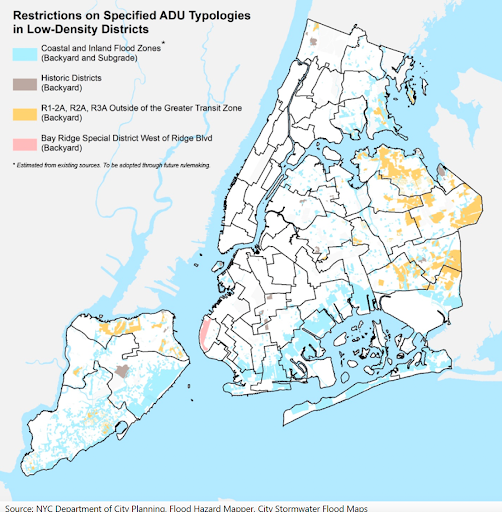
Dept. of City Planning
“It protects the unique character of our single-family neighborhoods and addresses community concerns about potential overcrowding,” said Councilmember Nantasha Williams, who helped secure the changes.
Councilmember Justin Brannan also secured an exemption for a special district in Bay Ridge where ADUs are banned in backyards, even though it’s not a flood risk, in a historic district, and is near transit.
“Councilman Brannan was the only member in southern Brooklyn—and one of only a few members representing an outer borough low density district—to vote in support of the bold City For All plan,” a spokesperson for Brannan told City & State, which first reported on the carve out.
To housing advocates like NYHC’s Cheney, the rollbacks represented a dent in the plan’s potential, but a win overall.
“From a policy standpoint, we supported [City of Yes] as it was, and felt like the city could and should do all the things that were originally proposed around parking mandates and where you’re allowed to have ADUs and TOD,” Cheney said.
Just the start
Zoning and Franchises Committee Chair Kevin Riley said that preserving the character of communities is not about prohibiting change, but balancing diverse concerns. Crucial to Riley’s Bronx constituents: protecting homeowners, increasing resiliency, and being able to use a car to get around.
Legislators that pushed for changes to City of Yes say they took a balanced approach. But some advocates say there is much more to be done, considering the scale of the crisis.
Production of 82,000 units over 15 years, as the current City of Yes plan is expected to bring, would be a 22 percent bump to New York City’s production rate compared to the last decade, according to Yonah Freemark, principal research associate at the Urban Institute. That still falls short of where it needs to be to meet the region’s needs, according to estimates from groups like the Regional Plan Association, which says the tri-state metropolitan area* needs nearly 2 million units by 2035.
“While zoning changes alone can not single-handedly solve the housing crisis, it will make a meaningful difference in building the housing that New Yorkers need,” said DCP’s Berkovitz, who emphasized that the administration is also pursuing complementary neighborhood planning efforts, capital investment, and tenant protections.
And many housing advocates still see City of Yes as a win, lauding both the increased housing production and the attached funding.
“This is the first real significant pro-housing step that New York has taken on any sort of comprehensive scale,” said Open New York’s Gray. “That’s a really important foundation to keep building from.”
*A previous version of this story stated that the Regional Plan Association estimates a need of 2 million new housing units to fill New York’s shortage; that figure is for the tri-state metropolitan area, not New York City alone, as previously stated. City Limits regrets the error.
To reach the editor, contact Jeanmarie@citylimits.org
Want to republish this story? Find City Limits’ reprint policy here.



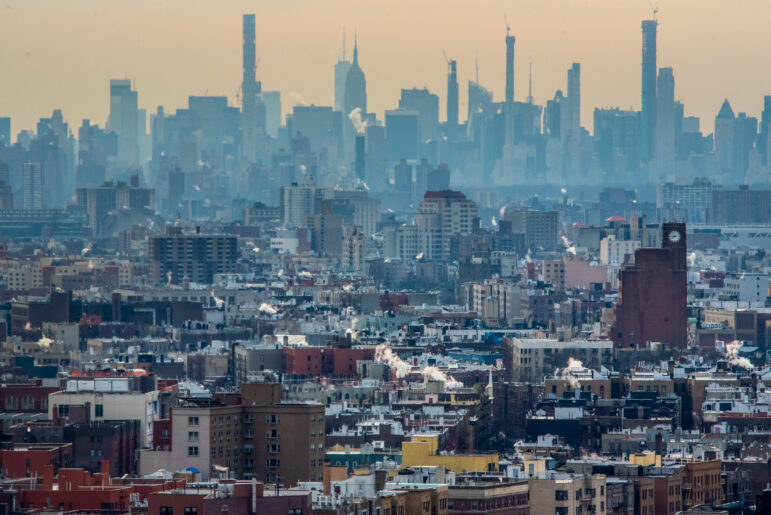
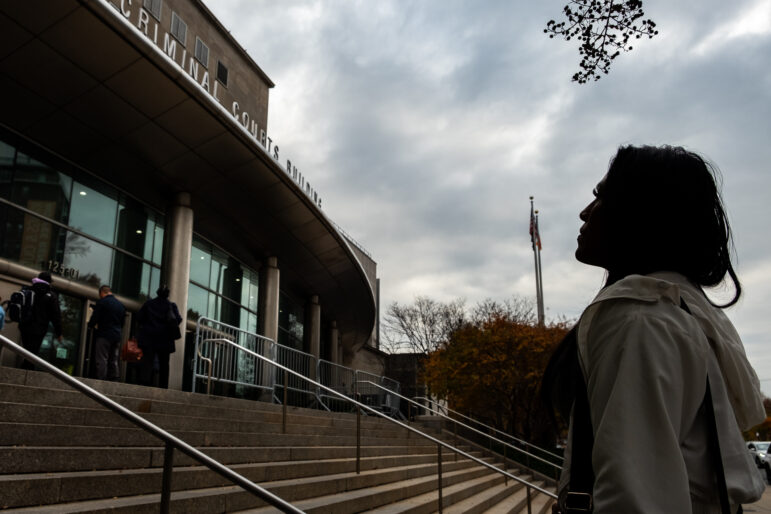

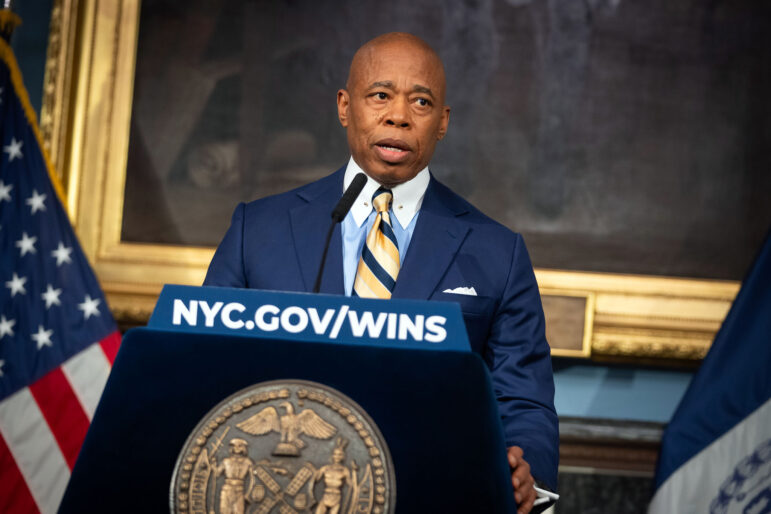


6 thoughts on “The Blocks, Strips, and Neighborhoods Carved Out of ‘City of Yes’”
By what idiocy is there even a ‘transit zone’ on Staten Island? The Staten Island Railway does NOT connect to the NYC subway system.
Eliminating NYC homeowners is the goal of City of Yes:
‘However, small home values could be sustained if DEVELOPERS could acquire them as potential sites for apartment buildings.’ – http://u.pc.cd/Y2e
SIR and the Ferry.
Those areas surrounding subway stations and the ferry terminal should have significantly more density.
Thanks for the eye opening article. We need more like this since the legislators do so much horse trading apparently. I’m struck by the fact that the article and apparently the discussion by the council members didn’t seem to focus at all on congestion air pollution and climate change. Adding population to the city almost certainly means adding cars. I think it’s unreasonable to think that out of a thousand new people no one will bring a car. And since most of this new housing is not low income that increases the chance of more cars. So while it is usually the case that creating parking spaces increases traffic and therefore eliminating parking spaces would decrease traffic.
Well it doesn’t really work that way. Unfortunately. In Inwood, we suffered a whole scale rezoning despite hundreds of people protesting for 5 years and a court case which we won the first round of,. There are many new high-rises now where we had six story buildings or even one or two story buildings and there are now 30 story buildings. Guaranteed there are more cars. So those drivers will be fighting with the locals for the already insufficient number of spaces for the cars that the locals own. That will increase congestion and pollution. Congestion means that ambulances and fire trucks are delayed. People can die that way. My own mother died in an ambulance going to a hospital.
So adding new upscale housing is going to have environmental impacts. Why does no one talk about this? There is an assumption that there are no limits to growth. Imagine New York City with 100 story buildings side by side covering the entirety of it? The developers certainly have no brakes unless enforced by the city. But nobody is even looking at how much money they have been funneling to the council members all these years. Our own council member got money from the Developers that built the 30 story Village at our end of the 207th street Bridge. Can you do some investigative reporting on the extent of donations paired with developments?
Including parking spots will absolutely increase the number of cars more than if none are included.
All of the exemptions are pitiful considering the very modest zoning changes proposed.
So many council members need to be voted out to improve the housing situation this city. The housing crisis is such a major burden on our city and these council members are part of the problem. They are one of the biggest obstacles.
The reduced transit zone is one of the worst modifications. The vast majority of those parcels will not be redeveloped so there will be so little housing constructed. It’s also going to be many years.
The parking exemptions near rail were also really bad.
The city is going to need to try again in a decade with something much more aggressive.